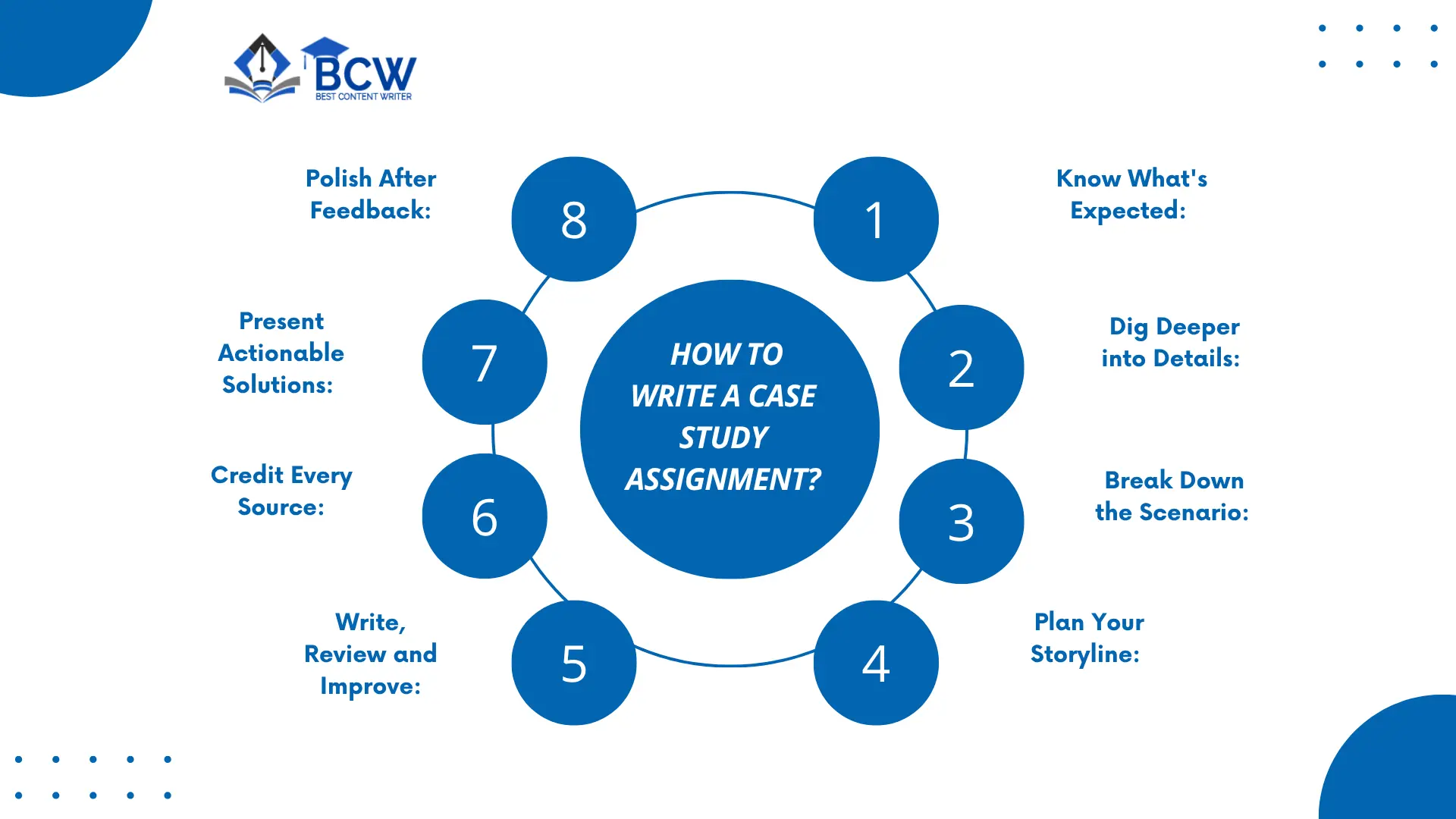
What Purpose Does a Case Study Assignment Serve?
Assignment case studies are designed to bridge theory and practice. They sharpen your analytical thinking and help reveal how certain concepts work in real situations. In case studies, you will often diagnose problems, weigh solutions, and defend decisions. Each case thus becomes your training ground for professional challenges ahead.
Various Case Study Formats You May Encounter
Analytical Case Studies:
Here’s where you dig deeper. You examine causes, evaluate effects, and interpret data critically. Why did this happen? What patterns emerge? Analytical case studies require one to be a detective who connects dots and builds arguments backed by evidence.
Descriptive Case Studies:
A descriptive assignment case study paints a detailed picture of a specific situation or event. You will document what happened, when, and how. The goal is to provide comprehensive observations without deep analysis.
Exploratory Case Studies:
These tackle uncharted territory. You investigate new phenomena or emerging issues where little research exists. Ideally, you are pioneering initial findings, raising questions, and setting the stage for future comprehensive studies.
Comparative Case Studies:
In a comparative assignment case study, you will explore similarities and differences between two or more cases. Which approach worked better? What can we learn from contrasting scenarios? Essentially, you draw insights through strategic comparison and contrast.
How to Write a Case Study Assignment?

Writing a stellar case study requires method, not magic. Follow this structured approach to turn complex case scenarios into compelling analyses. Each step here is there to build your argument systematically with clarity, depth, and strength through the entirety of your paper.
Know What's Expected:
Start by scrutinising your assignment rubric and guidelines carefully. Identify evaluation criteria, required sections, word count, and formatting specifications. Understanding grading expectations upfront ensures your effort aligns with the professor requirements.
Dig Deeper into Details:
Conduct comprehensive research beyond surface-level information. Examine primary sources, industry reports, academic journals, and relevant data. Gather both quantitative metrics and qualitative insights. Thorough investigation strengthens your analysis and offers evidence-based foundations for making recommendations.
Break Down the Scenario:
Next, identify the core problem, stakeholders involved, and contributing factors. Frameworks like SWOT analysis or Porter’s Five Forces are recommended to be used in this regard as they help dissect complex situations into manageable components and thereby reveal underlying issues.
Plan Your Storyline:
Outline your case study structure before writing. Organise the sections logically, such as the introduction, background, problem statement, analysis, alternatives, recommendations, and conclusion. A coherent roadmap will mean that you have a smooth narrative flow and prevent the chances of disjointed arguments that confuse readers.
Write, Review and Improve:
With the outline ready, you can proceed toward drafting your content. Once the first draft is ready, you may critically evaluate your work based on its logical consistency, argument strength, and evidence support. Revise relentlessly through multiple iterations to turn the rough drafts into a polished academic submission.
Credit Every Source:
Implement proper citations using the format advised by your institute. APA, MLA, Harvard, or Chicago are the most common formats used in case study assignments. It is important to document every borrowed idea, statistic, or quote without fail. Accurate referencing shows you have high academic integrity.
Present Actionable Solutions:
Move beyond problem identification and propose practical, feasible recommendations. Justify each solution with cost-benefit analysis, implementation timelines, and expected outcomes. Decision-makers need clear, executable strategies supported by solid reasoning and evidence.
Present Actionable Solutions:
Incorporate instructor comments and peer suggestions thoughtfully. If any weaknesses were identified during review, address them promptly. Proofread for grammar, spelling, and formatting errors. Through a careful refinement process, it is possible to elevate an average assignment case study into an exceptional one.
Pro Tips to Write a Winning Case Study Assignment
- Read the case carefully to grasp every detail and hidden insight.
- Organise content clearly so your narrative flows from the start.
- Support arguments using reliable information, facts, and real examples always.
- Suggest solutions that are practical, feasible, and backed by analysis.
- Review writing thoroughly, correcting errors to ensure a polished final work
Frequently Asked Questions
Get expert guidance to understand and write your case study assignment with clarity, accuracy, and confidence. Improve grades with professional academic support.BCW delivers high-quality academic, business, and professional content writing services tailored to meet every client’s unique requirements
Students write case study assignments to apply theories to real situations. Through these tasks they analyse problems deeply and show practical understanding. Case study assignments are a great way to connect classroom learning with real-world decisions today.
The most straightforward answer to what is case study assignment is, it is an academic project where you zoom in on one real scenario from the perspective of causes and solutions. On the other hand, a research paper focuses more broadly on theories, evidence, and arguments collected from multiple sources and studies.
A strong case study needs to include a series of essential elements to be strong. They are background details, clear problem identification, relevant data, well-supported analysis, practical recommendations, and a conclusion. A blend of these elements is essential to show what you learned through careful investigation in every paragraph section
Most case studies don’t have strict length rules, but teachers usually expect a few pages. The rule of thumb is to make it just enough depth to analyse the case properly without turning it into an overly long report.
Begin by reading the case carefully. When you do it, highlight the important points that come to your attention. Then identify the main problem, gather supporting evidence and outline your structure. You must have a clear focus on solutions when you start writing.

